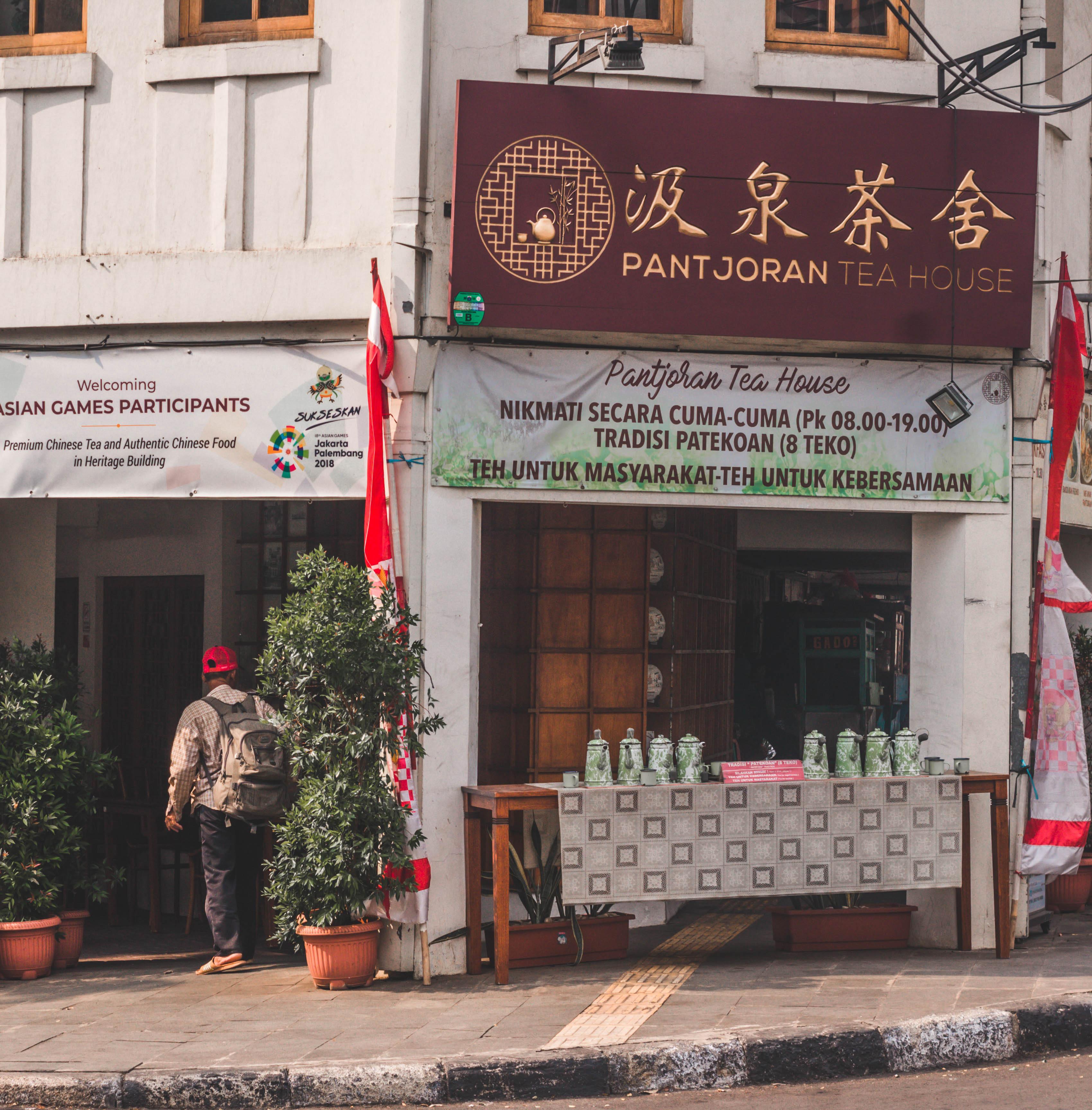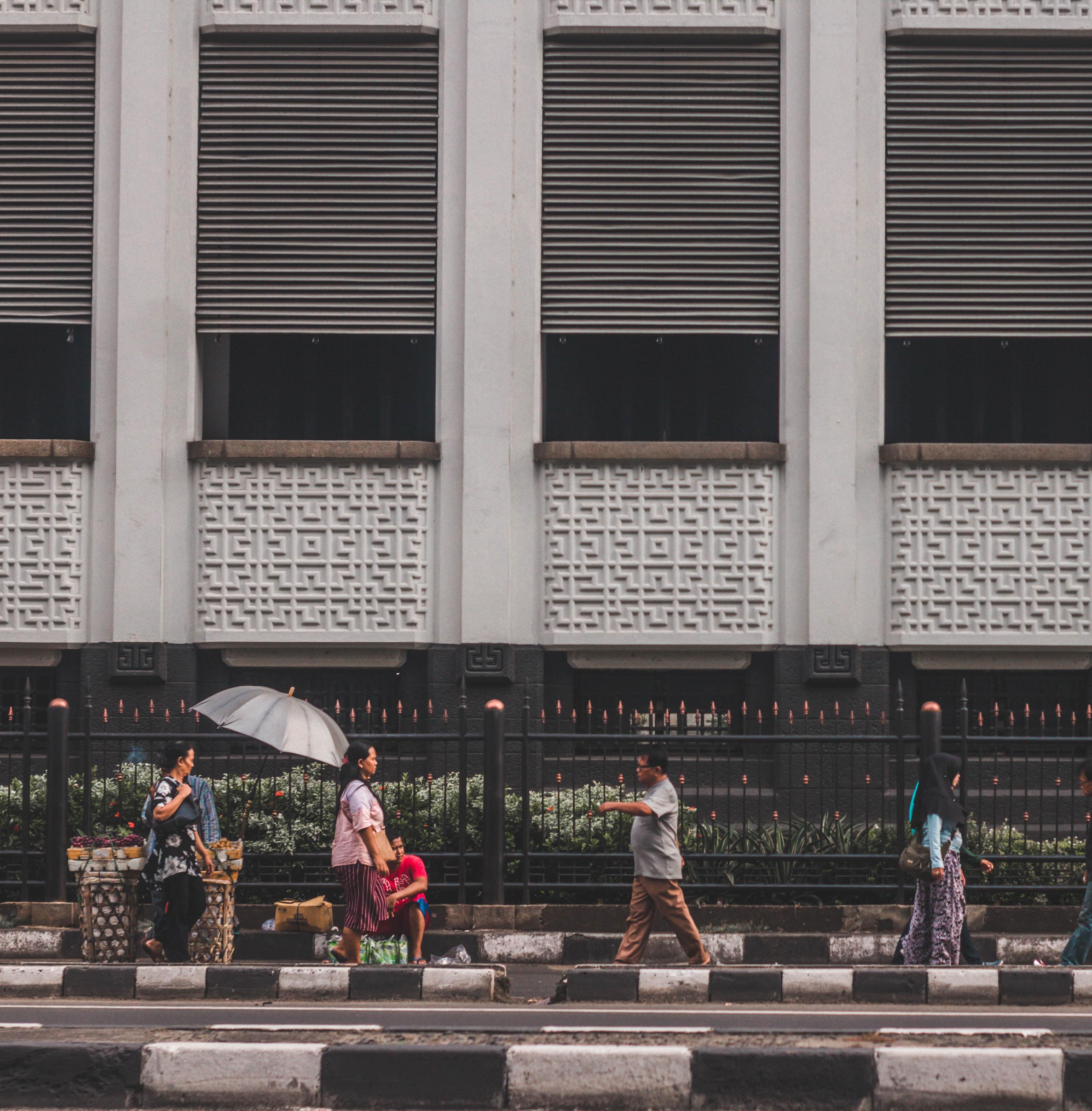
3 minute read
Pantjoran, The Tail of Forgotten Batavia
Free drinking tea for everyone who’s passing thru the pantjoran tea house.
Being one of the icons in the Old City, Glodok Chinatown holds a variety of cultural heritage. Inhabited by the majority of Chinese citizens, this area is famous for its authentic oriental dishes. The taste and tradition that is still maintained makes it one of the favorite culinary destinations in the capital city. The culture of drinking tea, for example, is still often done by residents in the Chinatown area. If you’re into all things historic, you’ll certainly appreciate Pantjoran Tea House, a teahouse located in an iconic building that used to house the famous Chung Hwa pharmacy. The pharmacy operated from 1928 to 1957 and was left abandoned after it went out of business. It was only recently that the building was restored and given a new life. Since its opening in March 2016, Pantjoran Tea House has been a popular destination for those looking for a place to sit back and relax while absorbing the beauty of Jakarta’s colonial-meets-commercial district. The story behind this teahouse began with a generous Chinese captain named Gan Djie, who used to provide cups of fine tea for anyone passing by his porch, at no charge, up to eight pots per day. News of his kindness soon spread, leading people to flock to his house from all parts of the city, and it eventually inspired the establishment of Pantjoran Tea House.
Advertisement
The Glodok area has an important role in the process of establishing the city of Batavia until it developed into the City of Jakarta. During the Dutch colonial administration, the Pancoran Glodok area was the main gateway to the city of Batavia from the south. According to local residents the term ‘Glodok’, taken from the sound of the water from the water that comes out of a small octagonal building built around 1743 in the middle of the courtyard Stadhuis (now the Jakarta History Museum). The sound of water jok grojok..grojok ... ’from that fountain by the Chinese population is spelled‘ Glodok ’. This building helps a lot of Dutch soldiers because it runs clean water that can be used daily.


The history of the development of the Glodok area and the Old City of Jakarta itself cannot be separated from tea. Not only as a commodity of trade, but also as a tradition. In Batavia, tea was first introduced by Andreas Cleyer, a botanist and Japanologist who worked for the VOC. He brought the first tea seeds from Japan in 1684 which were then planted around Tijgergracht, a canal in 17th century Batavia
In 1629, in the second attack the Mataram forces to Batavia caused the Ciliwung River as the only source of polluted clean water. Many residents of Batavia died from an epidemic of dysentery and cholera. However, the number of victims from Chinese citizens is small. It was discovered that the Chinese tradition of brewing tea with hot water saved their lives. One of the buildings that is a landmark in the Glodok / Chinatown area, which has been established since 1635, is the second oldest drug store in Jakarta (d / h Batavia) which was founded around 1928, known as Apotheek Chung Hwa. To support the government’s efforts to make the Old City area of Jakarta a world cultural heritage site by UNESCO, the building was revitalized in 2015 by architect Ahmad Djuhara, and turned into a tea shop under the name Pantjoran Tea House. The culture of drinking tea in the Chinatown was very strong at that time. The first tea seed was brought from Japan by a botanist named Andreas Cleyer with a VOC ship which usually anchored around the Old City of Jakarta.












